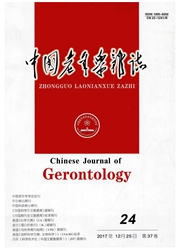

 中文摘要:
中文摘要:
目的探讨疏肝健脾方药对非酒精性脂肪性肝炎(NASH)大鼠肝组织核因子(NF)-κBmRNA及蛋白表达的影响。方法采用高脂饲料喂养复制NASH大鼠实验模型,施以造模因素的同时,各用药组大鼠分别灌服疏肝方、健脾方和疏肝健脾合方的高、低剂量进行干预。16w后,各组大鼠以3%戊巴比妥钠腹腔麻醉,腹主动脉采血,全自动生化分析仪检测血清总胆固醇(Tc)、甘油三酯(TG)、高密度脂蛋白胆固醇(HDL—C)、低密度脂蛋白胆固醇(LDL—C)含量,肝组织TC、TG含量;HE染色和油红O染色观察肝组织病理变化;实时定量PCR法检测肝组织NF-κBmRNA表达水平;Western印迹法检测肝组织NF—κB蛋白表达水平。结果与正常组相比,模型组大鼠肝细胞脂肪变性明显,血脂及肝脂均有不同程度的升高(P〈0.05,P〈0.01),大鼠肝组织NF-κBmRNA及蛋白表达明显升高(P〈0.01);与模型组相比,各用药组血脂和肝组织NF-κBmRNA及蛋白的表达均较模型组显著降低(P〈0.05,P〈0.01),尤以综合方高剂量及健脾高剂量作用最为显著。结论疏肝健脾方药对高脂饮食诱导的大鼠NASH有较好的防治作用.其机制可能与其下调肝脏NF-κBmRNA及蛋自的表达有关。
 英文摘要:
英文摘要:
Objective To observe the effects of soothing liver and invigorating spleen recipes on expression of NF—κB mRNA and protein in hepatic tissue of rats with non-alcoholic steatohepatitis (NASH). Methods Model of NASH rat was made by high fat diet. At the same time of madding model, rats were given soothing liver recipes, invigorating spleen recipes and integrated recipes for 16 weeks respec- tively. Rats were anesthetized using 3% sodium pentobarbital and the abdominals were opened, then the rats were executed to obtain blood samples from the aortaventralis. The contents of TC, TG, HDL-C, LDL-C in the serum, as well as TC, TG in the hepatic homogenate were detected by automatic biochemical analyzer. The histopathological changes of hepatic tissue were observed by HE and oil red O staining. The expressions of NF—κB mRNA in liver tissue were analyzed by real-time Q-PCR. The expression of protein NF—κB in the hepatic tissue was ex- amined by western blot method. Results Compared with normal group, there were obvious fatty degeneration in hepatocytes in model group (P 〈 0. 05 ,P 〈 0.01 ). The expression of NF—κB mRNA and protein in the hepatic tissue were dramatically increased (P 〈 0. 01 ). Com- pared with the model group, the serum TC, TG, HDL-C, LDL-C levels and the liver levels of TC, TG and the expression of NF—κB mRNA and protein in each treatment group were decreased in different degree (P 〈 0. 05 ,P 〈 0. 01 ) , especially the roles of integrated recipes high dose and invigorating spleen high dose were the most outstanding. Conclusions Soothing liver and invigorating spleen methods and recipes show certain therapeutic effects on rats with NASH, which may be due to its effects in down-regulating expression of the liver NF—κB mRNA and protein in hepatic tissue.
 同期刊论文项目
同期刊论文项目
 同项目期刊论文
同项目期刊论文
 期刊信息
期刊信息
